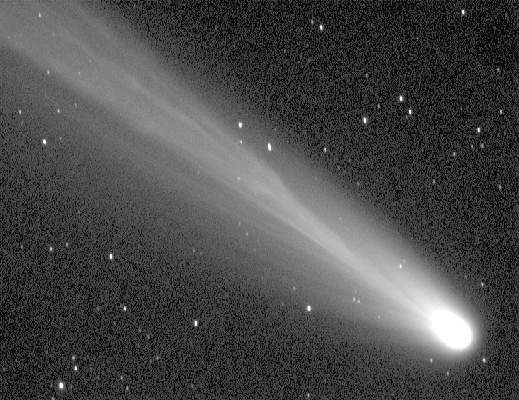Credit & Copyright: Michael Karrer
Explanation:
As
Comet Ikeya-Zhang approached the Sun two months ago,
it developed a complex blue ion tail.
The tail was composed of
ions that boiled off the
nucleus and were pushed away from the
Sun by the out-flowing fast-moving particles of the
solar wind.
Complexity in the tail is created by
comet nucleus rotation,
variability in the comet surface
evaporation rate, and variability of the
Sun's magnetic field and
solar wind.
The above animation documents how Comet Ikeya-Zhang's tail
changed over 30 minutes in ten consecutive 3-minute exposures on March 11.
Comet Ikeya Zhang is now fading as it heads back to the outer
Solar System.
It should
remain visible through a small telescope for another month.
1998 1999 2000 2001 2002 2003 2004 2005 2006 2007 2008 2009 2010 2011 2012 2013 2014 2015 2016 2017 2018 2019 2020 2021 2022 2023 2024 |
Январь Февраль Март Апрель Май Июнь Июль Август Сентябрь Октябрь Ноябрь Декабрь |
NASA Web Site Statements, Warnings, and Disclaimers
NASA Official: Jay Norris. Specific rights apply.
A service of: LHEA at NASA / GSFC
& Michigan Tech. U.
|
Публикации с ключевыми словами:
comet tail - comet Ikeya-Zhang - комета Икея-Жанга - кометные хвосты
Публикации со словами: comet tail - comet Ikeya-Zhang - комета Икея-Жанга - кометные хвосты | |
См. также:
Все публикации на ту же тему >> | |
